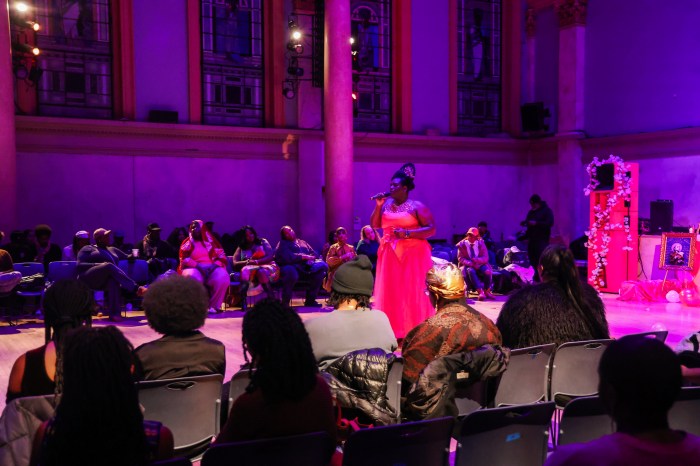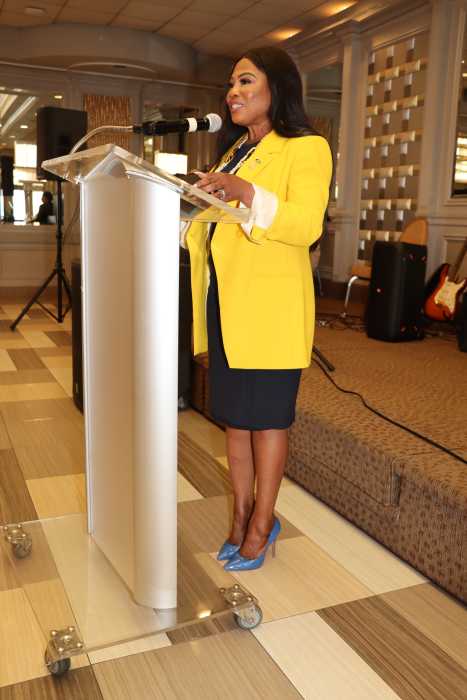Singular vision turns movement into kinetic painting
In his native China, Shen Wei was known for prodigious dancing, which combined strong Western modern technique with what he learned as a child from traditional Chinese Opera. A founding member of the Guangdong Modern Dance Company, China’s first such troupe, he came to America in 1995.
In the decade since founding Shen Wei Dance Arts in 2000, he has won wide acclaim and soared to the heights of international touring.Still, it takes quite a spectacle to fill the 55,000 square feet of the Park Avenue Armory’s Wade Thompson Drill Hall, set up with riser banks on three sides of a square stage that runs 60 feet across. As one of the Armory’s artists in residence, the imposing scale was Shen’s challenge in revisiting two of his signature pieces and mounting a commissioned world premiere.
Shen is as much visual artist as choreographer and designs sets, costumes, and makeup as well as movement. Visual and kinetic elements work together symbiotically. In a revised staging of “Rite of Spring” (2003), set to a four-hand piano arrangement of Stravinsky’s ubiquitous score, 12 dancers enter from the two downstage corners and surround a gray canvas floor cloth painted with a skewed grid of white and black lines. They wear various shades of gray clothing, embossed with similar chalky lines.
They form a close-knit but emotionally remote society, as they walk with rigid backs and arms locked at their sides. Four more dancers join them, and in response to the music, they burst into athletic spasms. At first, the relationship between music and dance is predictable. But when Stravinsky’s rhythms become more complex, aural landmarks in the score are the cues Shen relies on, and things become more intriguing.
By far the most stunning piece of the evening is “Folding” (2000), originally created for Guangdong. The minimalist work has its cast of 17 gliding figures with bulging skulls and flowing trains –– first, made from a silky, blood-red fabric and, later, a stiffer, more voluminous black material. The effect is a majestic panorama of arcing pathways and exquisite tableaus.
The dancers in black are paired into composite creatures, tall and two-headed. The women being carried arch backward into yawns or slide to the ground and ride on their partners’ trains, being ferried across a serene, white ocean beneath a dappled sky.
A solo by Shen delivers the evening’s breathtaking moment, when the rear curtain rises glacially and the red-clad clan migrates into the black void at the rear of the gigantic hall. Then, in a subdued island of light –– designed by Jennifer Tipton, who can articulate darkness like no other –– the chorus mirrors Shen’s gestures like an amplified echo across a huge chasm. This measured ritual, the essence of spectacle, slows time and sustains its mesmerizing power as it expands to the full dimensions the huge space allows.
The premiere, “Undivided Divided,” also uses the hall’s entire expanse. The floor is a grid of 60 seven-foot-square panels separated by aisles. Toward the rear of the space stand Plexiglas constructions, stacked cubes, tilted planes, and a huge horizontal canvas. The audience members are invited to remove their shoes and amble along the designated corridors around the 30 supine dancers, who soon begin to stir.
It’s an immersive –– though not interactive –– experience, as we watch from an intimately close vantage point but cannot touch. The dancers dive onto the panels, on which there are small puddles of paint. They squirm on the panels, turning them into action paintings, then pair up and smear each other. It’s interesting to note that none of the pairings is same-gender, and although the women are topless, everyone wears decorous beige briefs.
The opening night audience on November 29, studded with dance and art world luminaries, greeted the spectacle enthusiastically as much for the daring of its scale as for its artistry.
As a gallery installation, “Undivided Divided” could go on for hours, but as a theater piece –– the third part of a nearly three-hour show –– it runs about ten minutes beyond its capacity to hold our attention. Still, it whets our appetites for a new era of large-scale, American-made dance performance.
Essentials:
SHEN WEI DANCE ARTS
Through December 4
Park Avenue Armory
643 Park Ave. btwn. 66th & 67th Sts.
Dec. 1-4, 7:30 p.m.
$35; armoryonpark.org
Or 212-933-5812
































